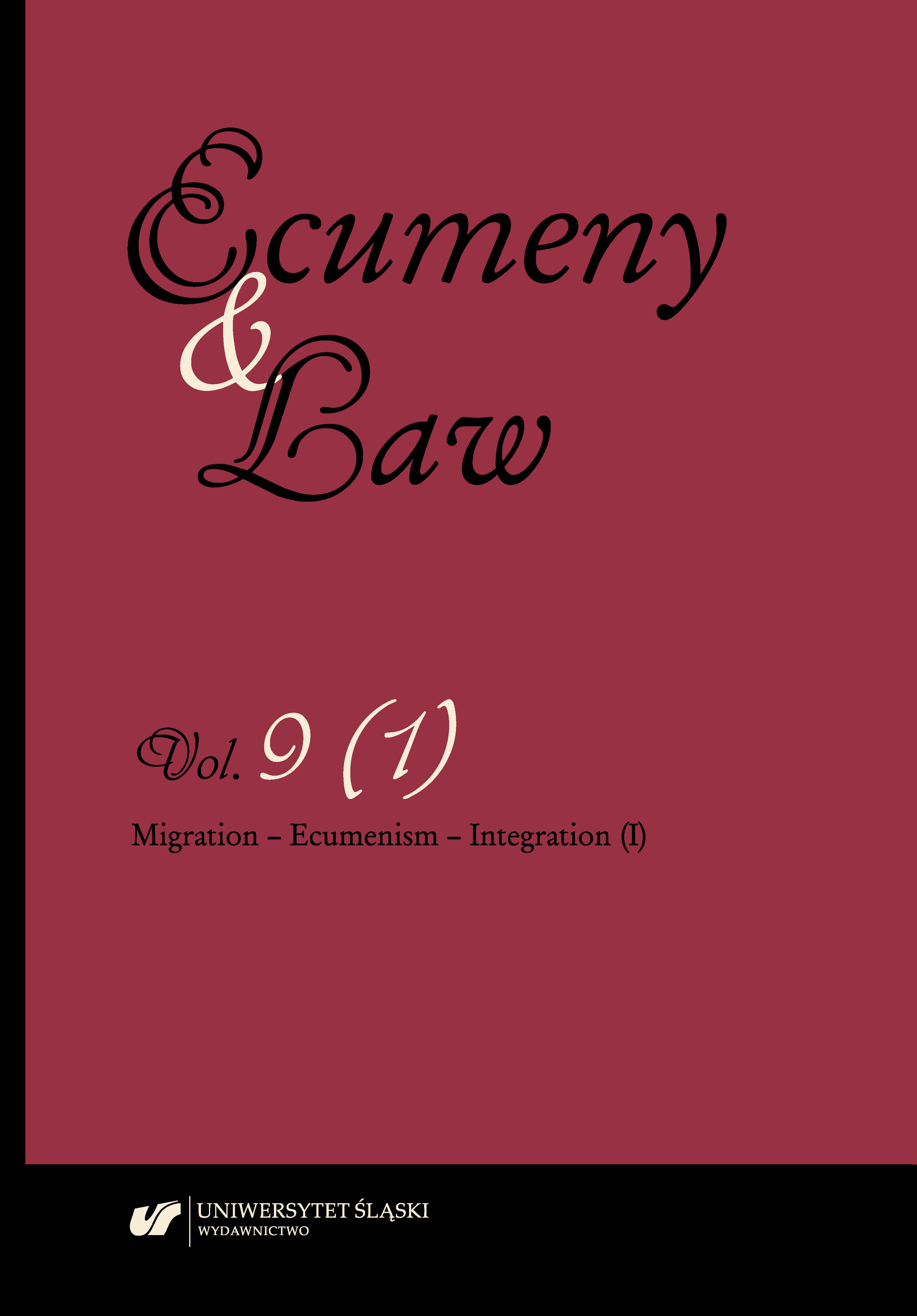Balicki J.: “‘Dzieci Abrahama’. Chrześcijaństwo — islam w dobie kryzysu migracyjnego.” “Civitas”. Studia z filozofii polityki, nr 19, Warszawa 2016, pp. 111—137.
Google Scholar
Balicki J.: “Przesłanki demograficzne islamofobii w Zachodniej Europie. Analiza krytyczna.” Roczniki Nauk Społecznych, KUL 6 (2014), no. 3, pp. 11—30.
Google Scholar
Balicki J.: “Zjednoczona prawica w Polsce wobec wyzwań kryzysu migracyjnego w Europie. Perspektywa politologiczno-etyczna.” Wschodni Rocznik Humanistyczny 16 (2019), no 4, pp. 63—83.
Google Scholar
Bayrakli E., Hafez F.: “The State of Islamophobia In Europe,” http://www.islamophobiaeurope.com/executive-summary/2017-2/ [access: 1.06.2020].
Google Scholar
Bobako M.: Islamofobia jako technologia władzy. Studium z antropologii politycznej. Kraków 2017.
Google Scholar
Duderija A., Rane H.: Islam and Muslims in the West. Major Issues and Debates. Cham, Switzerland 2019.
Google Scholar
“From Antisemitism to anti-Muslim Racism. Faith Matters 2017,” https://www.faith-matters.org/2017/12/08/changing-face-hate-poland-antisemitism-anti-muslim-hatred/.
Google Scholar
“Germans support democracy, but are concerned about Islam.” Die Welt, 11.07.2019, https://www.dw.com/en/germans-support-democracy-but-are-concerned-about-islam/a-49549541 [access: 1.06.2020].
Google Scholar
Górny A., Grzymała-Moszczyńska H., Klaus W., Łodziński Sł: Uchodźcy w Polsce. Sytuacja prawna, skala napływu i integracja w społeczeństwie polskim oraz rekomendacje. Kraków—Warszawa 2017.
Google Scholar
Kaemingk M.: Christian Hospitality and Muslim Immigration in an Age of Fear. Grand Rapids, MI 2018.
Google Scholar
Lendavai P.: Orbán. Europe’s New Strongman. London 2017.
Google Scholar
Modood T.: Multicultural Politics. Racism, Ethnicity and Muslims in Britain. Bodmin 2005.
Google Scholar
Negatywny obraz muzułmanów w polskiej prasie. Analiza wybranych przykładów z lat 2015—2016. Raport Obserwatorium Debaty Publicznej „Kultury Liberalnej”, Warszawa, styczeń 2017.
Google Scholar
OIC Observatory Report on Islamophobia June 2018—February 2019 presented to the 46th Council of Foreign Ministers Abu Dhabi, United Arab Emirates, 1-2 March 2019, https://www.oic-oci.org/upload/islamophobia/2019/12th_islamosphobia_annual_report_2019_en.pdf [access: 1.06.2020].
Google Scholar
Pędziwiatr K.: “Islamophobia in Poland: National Report 2016.” In: European Islamophobia Report 2016. Eds. E. Bayrakli, F.Hafez. Istanbul 2017.
Google Scholar
Pickel G., Öztürk C.: “Islamophobia Without Muslims? The ‘Contact Hypothesis’ as an Explanation for Anti-Muslim Attitudes — Eastern European Societies in a Comparative Perspective.” Journal of Nationalism, Memory & Language Politics 12 (2018).
Google Scholar
Pipes D.: Poland’s Muslim ban. Washington Times, 1.07.2018, https://www.washingtontimes.com/news/2018/jul/1/how-poland-responds-to-western-europes-illegal-mig/[access: 1.06.2020].
Google Scholar
Raport Obserwatorium Debaty Publicznej „Kultury Liberalnej”. Negatywny obraz muzułmanów w polskiej prasie. Analiza wybranych przykładów z lat 2015—2016, Biuro Rzecznika Praw Obywatelskich, Warszawa, styczeń 2017, https://www.rpo.gov.pl/sites/default/files/Raport_Negatywny_obraz_muzulmanow_w_polskiej_prasie_Analiza_wybranych_przykladow_z_lat_2015_2016.pdf [access: 1.06.2020].
Google Scholar
Rose St: “From antisemitism to anti-Muslim racism: The evolving face of the far-right in Poland,” Faith Matters, 2017, London 2017, https://www.faith-matters.org/2017/12/08/changing-face-hate-poland-antisemitism-anti-muslim-hatred/[access: 1.06.2020].
Google Scholar
Tauran J.-L.: “We Shouldn’t Fear Islam.” Zenit 18.02.2010.
Google Scholar
Tenth OIC Observatory Report on Islamophobia, October 2016—May 2017, presented to the 44th Council of foreign ministers Abidjan, Republic of Cote d’Ivoire 10—11 July 2017.
Google Scholar
Trines St.: “Europe. Lessons From Germany’s Refugee Crisis: Integration, Costs, and Benefits.” World Education News & Reviews, 2.05.2017, https://wenr.wes.org/2017/05/lessons-germanys-refugee-crisis-integration-costs-benefits [access: 1.06.2020].
Google Scholar


 https://doi.org/10.31261/EaL.2021.09.1.06
https://doi.org/10.31261/EaL.2021.09.1.06

 10.31261/EaL
10.31261/EaL